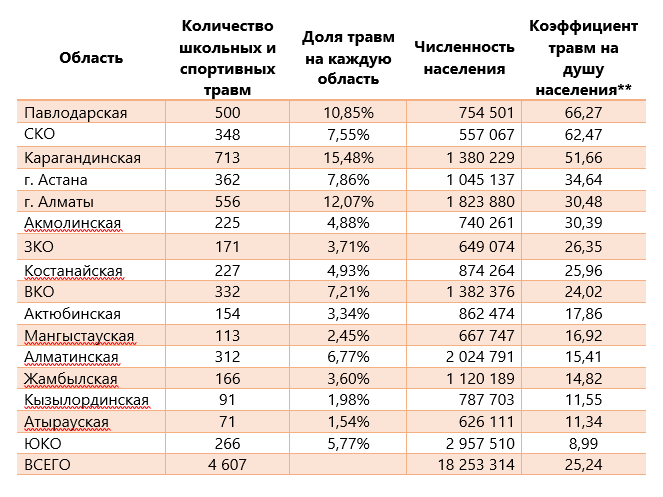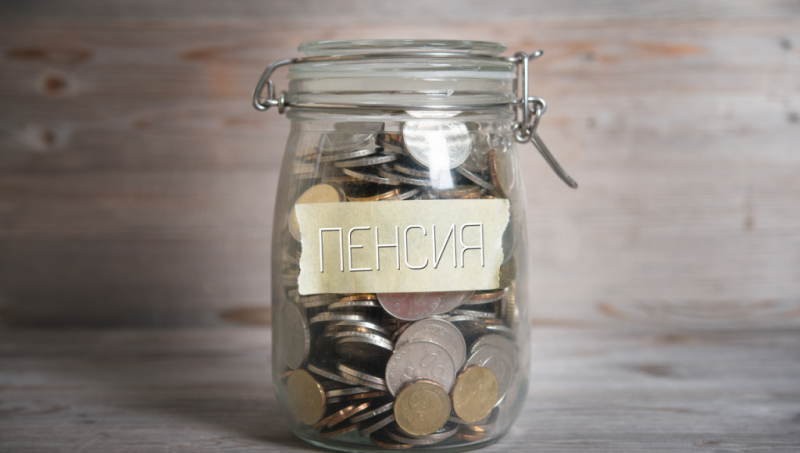According to the Ministry of Health of the RK, over the six months of 2018 children under the age of 17 have received 89,010 injuries. 2,299 of them are school injuries and 2,308 are sportive ones. In total, these injuries account for about 6%. It is worth noting that "school" injuries are traumas received in school. However, injuries received, for example, in physical education classes, are considered as "sport injuries". Boys are more prone to injuries with 64% of cases.
As for statistics by regions, the biggest number of "school" and "sport" injuries for children are in Karaganda (15.5%), Almaty (12.1%), Pavlodar region (10.9%), Astana (7.9%) and North-Kazakhstan oblast (7.6%). These regions account for 54% of all injuries in the country. If you focus on the trauma coefficient per capita, the statistics will be different.
Most often, accidents occur during the breaks. As specialists explain, this is due to the natural hyperactivity of children. As during the lessons, they have to sit in one place and move little. Therefore, each recess is a relaxation and an opportunity to splash out the accumulated energy.
Physical education is the most dangerous class. Any physical activity is a potential risk, especially for children of lower grades. Next is home economy class. As a rule, boys are more often injured. After all, they have to work with tools and potentially dangerous equipment. Then come physics and chemistry. The mid school children are sometimes carried away by experiments in the classroom, which often leads to explosions of flasks with chemicals and burns.
The rating of the most frequent "school" and "sports" injuries:
• Injuries of the upper limb (42.8%): wrist, hand and elbow;
• Injuries of the lower limbs (31.9%): dislocations, sprains, foot fractures, injuries of knees, muscles and tendons;
• Head injury (13.8%), most often concussions of various severity;
• Injuries of abdomen, lower back, lumbar spine and pelvis (4.2%), trauma of hip joints, hips and spine;
• Chest injuries (2.7%);
• Consequences of injuries, poisonings and other exposures to external influence (1.3%);
• Neck injuries (1.2%).
“Parents want the best for their children. Unfortunately, we can never anticipate everything, even if we give children all the attention and care. After all, anything can happen. Of course, abrasions and injuries are a part of childhood. I think everyone has a child's scar on his body or a story about how he fell off a bicycle. However, as a parent, I would like to protect my children from all the bad things," says Dauren Imanzhanov, the Chairman of the board of Nomad Insurance Company. - Of course, the insurance policy is not able to protect the child from school trauma, but it can make up for the financial costs for treatment in private clinics. After all, often the health of a child depends on how quickly to proceed to treatment."
Children's insurance programs (at the age between 3 and 17) provide protection against accidents. The cost of the policy is not high. For example, if you want to insure a child for KZT 3,500,000 an average annual policy will cost KZT 17,500. And the protection will be 24/7.
Source: https://www.icn.kz/ru/news/kakie-travmy-chasche-vsego-poluchayut-deti-v-shkolah
Photo per website: liter.kz





